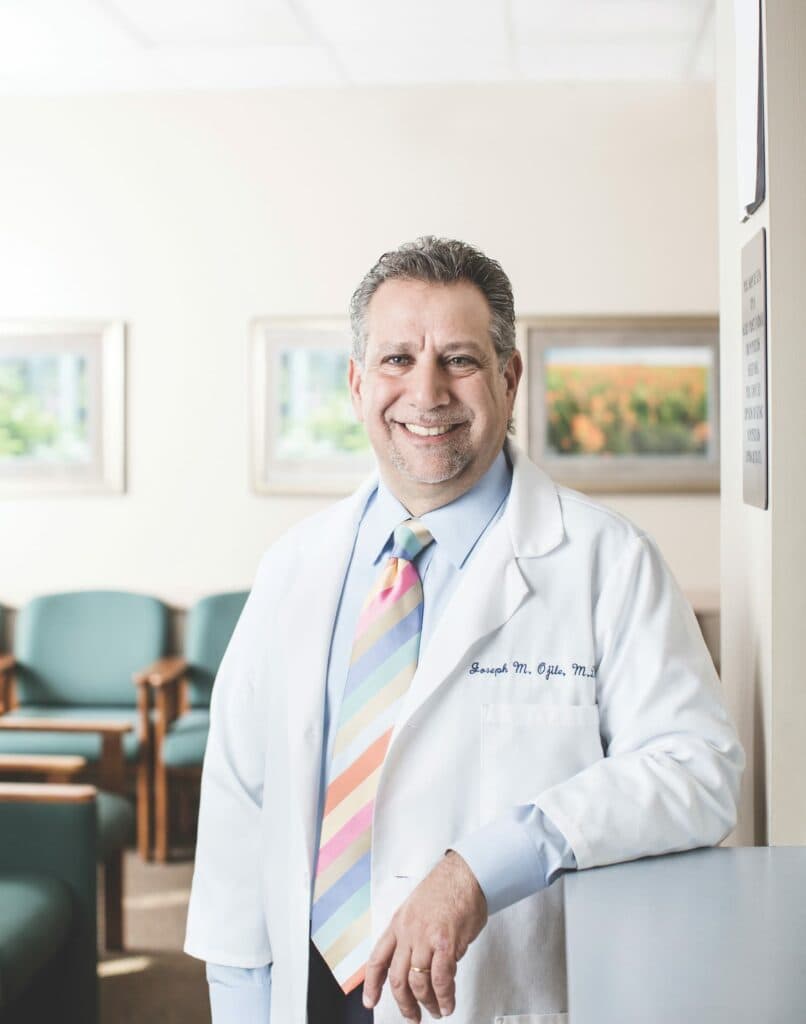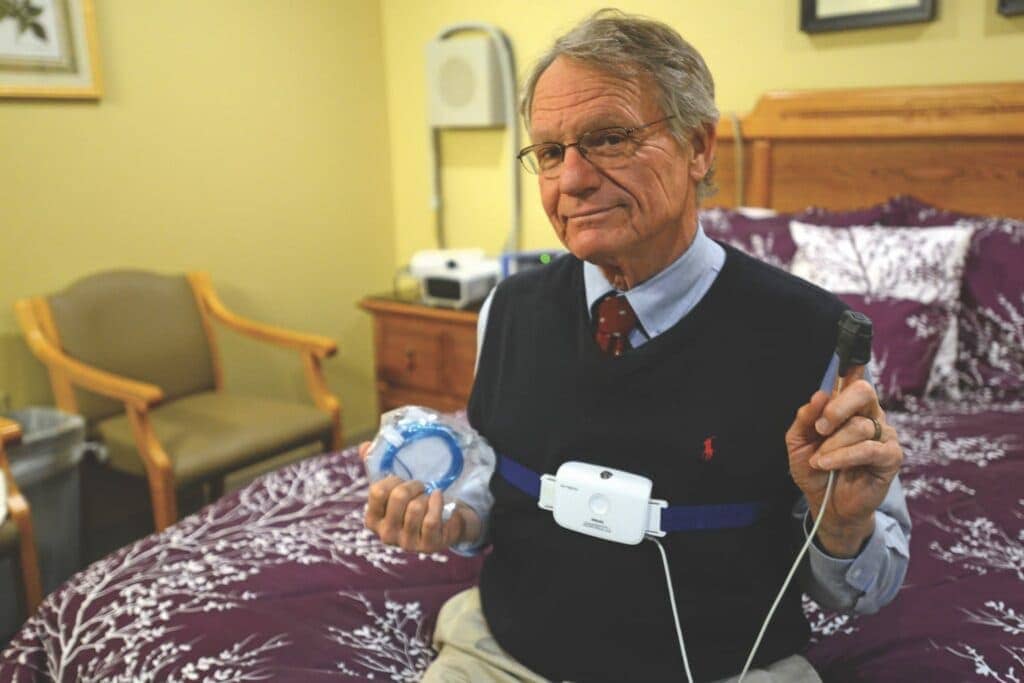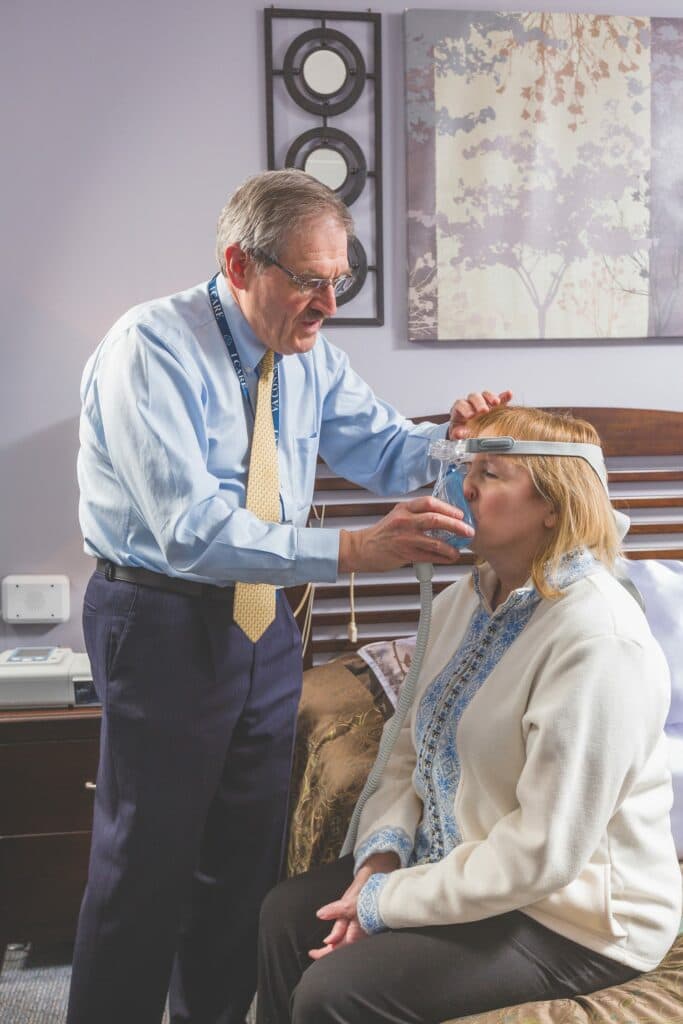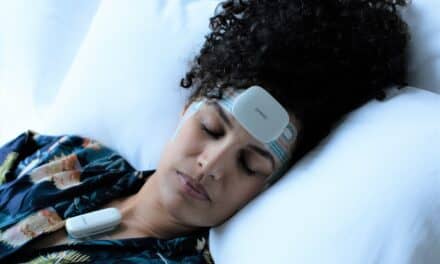When should a treated OSA patient have a repeat PSG or HSAT? The American Academy of Sleep Medicine releases its first statement to guide clinicians.
By Jane Kollmer
For the first time, the American Academy of Sleep Medicine (AASM) has issued guidance for the appropriate use of follow-up polysomnography (PSG) or home sleep apnea tests (HSATs) on patients undergoing treatment for obstructive sleep apnea (OSA). Because OSA is a chronic disorder with many associated health risks, its successful long-term management is vital to patient health and sleep-related quality of life.
Although previously issued guidelines addressed the initial indications for sleep apnea testing for diagnostic purposes, there has not been established guidance for clinicians about if or when follow-up testing should be performed in patients with a diagnosis of OSA.
For many, this is welcome and long-awaited news.
“We are so excited to learn that the American Academy of Sleep Medicine expanded the utility of home sleep apnea testing to include longitudinal therapy evaluation,” says Hani Kayyali, president and CEO of CleveMed, a manufacturer of sleep monitoring technologies. “We are strong believers that, similar to other chronic conditions, follow-up testing on OSA patients is needed to improve long-term care.” CleveMed holds multiple patents covering technologies for longitudinal positive airway pressure therapy evaluation.
AASM’s new statement and guidelines were written by a task force of five sleep medicine experts. The resulting study, “Use of polysomnography and home sleep apnea tests for the longitudinal management of obstructive sleep apnea in adults: an American Academy of Sleep Medicine clinical guidance statement,” was published in the June 1, 2021 issue of the Journal of Clinical Sleep Medicine.
“The AASM is committed to adhering to evidence-based management supported by literature when it is available,” says Sean Caples, DO, MS, professor of medicine at Mayo Clinic and one of the study authors who developed the guidelines. “There is very little published literature to address this specific question, including in those with cardiovascular disease, so we had to rely a lot on expert consensus.”
[RECOMMENDED: Front-loaded to a Fault?]
The statement features six main guidelines. The first recommends against follow-up PSG or HSAT for routine reassessment of asymptomatic patients with obstructive sleep apnea on positive airway pressure (PAP or continuous PAP/CPAP) therapy.
However, follow-up PSG or HSAT can be used to reassess patients with recurrent or persistent symptoms despite good adherence to PAP therapy.
Caples says, “The recommendation to NOT routinely repeat testing in asymptomatic patients who are being treated for OSA might help reduce unnecessary testing.”

Sleep physician Joseph Ojile, MD, DABSM, who was not involved in creating the guidelines, is pleased the clinical guidance statement reflects life on the ground.
“The guidelines are consistent with current practice patterns,” says Ojile, chief medical officer at Clayton Sleep Institute in St. Louis, Mo, and president of the Clayton Sleep Research Foundation. “In other words, if a person is doing well on the device and is stable, there is no indication to do a follow-up test because it is not needed.”
A second strong recommendation for the use of PSG or HSAT follow-up testing is to assess response to treatment with non-PAP interventions. These treatments include oral appliance therapy, nasal expiratory positive airway pressure, upper airway surgery, positional therapy, oral pressure therapy, weight loss, and hypoglossal nerve stimulation. Clinical reassessment should include follow-up testing to ensure successful treatment of OSA with the chosen treatment at the appropriate time interval. Furthermore, the type of test, PSG versus HSAT, will depend on several factors, including comorbidities, patient comfort, ability to wear/operate the HSAT equipment, cost of testing, and resource utilization.

Sleep physician Michael Zachek, MD, who was not involved in creating the guidelines, notes that some insurance providers require a recent sleep study prior to initiation of select alternate therapies. “One of the criteria that I’ve been using a repeat study for lately has been the institution of hypoglossal nerve stimulation,” he says. “Most insurance companies require this as part of the pre-certification process. The study must be done within two years.”
The third statement supports follow-up testing for patients who experience clinically significant weight gain or loss that has occurred since diagnosis of OSA or initiation of treatment. Weight plays a significant role in pharyngeal airway size and flow dynamic, so repeat testing may be necessary when a patient experiences a 10% to 20% change in weight.
The fourth statement relates to sleep-related hypoxemia and/or sleep-related hypoventilation following initiation of treatment for OSA. Some patients, particularly those with underlying cardiopulmonary disease, may have hypoxemia or hypoventilation that persists or develops following initial implementation of treatment such as PAP therapy. The study authors emphasize the importance of identifying these issues with follow-up testing and appropriate treatment changes to prevent long-term consequences such as pulmonary hypertension or heart failure.
In this case, they suggest PSG as a useful follow-up to reassess these patients. Although overnight pulse oximetry is sometimes used to detect sleep-related hypoxemia in the setting of cardiopulmonary or neuromuscular disease, not enough studies support its use and the interpretation of results is not standardized, according to Caples. PSG is still the diagnostic test of choice to determine the existence of other sleep-related breathing disorders.
“It is probably true that some clinicians do use oximetry; however, practice patterns aren’t really known,” Caples says. “Oximetry as a diagnostic test is limited in sensitivity and specificity; good evidence supporting the use of oximetry does not exist.”

Sleep physician Meir Kryger, MD, FRCPC, who was not involved in creating the guidelines, says he would eventually like to see more guidance on whether any of the consumer devices available that measure blood oxygen or sleep might be used in this context.
Says Kryger, a professor at Yale University, “A lot of people are getting oximeters and other devices that monitor sleep and it would be useful to know whether follow-up with those kinds of instruments would turn out to be valid. There is no data on that and it would need to be studied in detail.”
The fifth statement relates to cardiovascular disease and its strong link with OSA. A systematic review of the literature found no direct evidence to guide if and when follow-up testing should be performed in individuals with cardiovascular disease, but it could be considered in certain clinical situations, including systemic hypertension, heart failure, cardiac arrhythmias, and stroke.
“If someone has had a stroke or developed heart failure, those are excellent indications for re-evaluations because both of those can affect the type of apnea and the severity,” Kryger says.
The sixth statement maintains that follow-up PSG may be used in the case of unexplained device-generated data. Automated event detection obtained from a positive airway pressure device may be considered in the decision to perform follow-up PSG or HSAT, though the authors caution that such data comes from proprietary software so is of uncertain validity. They say follow-up PSG may be warranted based on automated event detection when device software shows the residual apnea-hypopnea index (AHI) remains elevated, particularly in the face of symptoms.
Zachek says, “I do pay attention to the AHI that is generated. There are circumstances where this prompts me to move to a more sophisticated device, for example, an ASV.”
The statement also addresses a controversy around treatment-emergent central sleep apnea. Evidence for this condition on PAP download (a high central apnea index) could represent an indication for repeat testing. Since treatment-emergent central sleep apnea dissipates over time in a sizable number of patients, the authors say repeat testing should occur after a minimum of three months of PAP therapy.
“The significance of treatment-emergent central sleep apnea is a matter of debate, so it’s difficult to make firm recommendations,” Caples says. “This statement highlights the uncertainties but also gives some guidance on navigating an approach.”
Zachek notes a practical need for a patient to undergo a repeat sleep test, though not necessarily a clinical reason. “The other reason we might think about a repeat study is the inability to locate a study done in the distant past. Many patients change location and durable medical equipment providers. When requesting updated supplies and/or a new machine, a repeat study is sometimes necessary to satisfy insurance,” he says.
Overall, the guidelines contain no surprises.
“What they’re summarizing is what people have learned to do anyway,” Kryger says. “All of these things people have actually been doing for the past few years, as in, we no longer do follow-up studies on patients on CPAP who are doing well clinically. It’s nice to see that this has now been carved in stone.”
Ojile says, “The guidelines give us the intellectual framework to have these discussions and gives a rationale for the utilization of certain follow-up tests. For those who aren’t doing well on PAP therapy, we need them to come into the lab to study them.”
Jane Kollmer is co-owner of Ch/At Communications, which provides writing and editing services to clients in the healthcare and travel industries.
Reference
Caples SM, Anderson WM, Calero K, et al. Use of polysomnography and home sleep apnea tests for the longitudinal management of obstructive sleep apnea in adults: an American Academy of Sleep Medicine clinical guidance statement. J Clin Sleep Med. 2021;17(6):1287–93.
Illustration 167895134 © Ahasoft | Dreamstime.com





